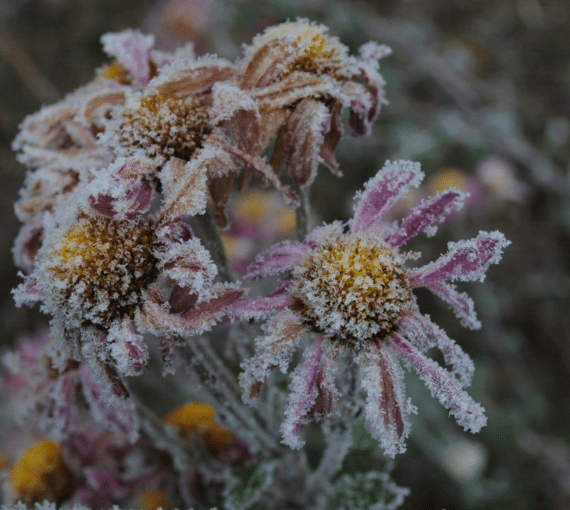
You don’t need synthetic pesticides. Make Earth-friendly alternatives that are safe to use on plants in your outdoor and indoor gardens.
A thriving garden should be full of life — buzzing bees, fluttering butterflies, vibrant plants and rich, healthy soil. But when “pests” (unwelcome intruders) show up, many gardeners turn to pesticides without realizing the long-term harm they cause.
You don’t need synthetic pesticides to grow a successful garden. In fact, choosing not to use them is one of the best ways to protect the biodiversity that helps your garden thrive.
The hidden costs of pesticides
While chemical pesticides offer quick results, they damage more than the intended targets. Research has linked even common home-use insecticides to:
- Declines in pollinator populations, including wild bees, butterflies and hoverflies.
- Contamination of soil and water, which harms earthworms and aquatic life.
- Human health risks, especially for children and pets, through residue and runoff.
Most household use of pesticides is unnecessary and alternatives exist. In fact, several provinces have already banned the use of many cosmetic pesticides due to these risks.
Why you don’t need them
Pest control is built into nature — you just have to help it along. A healthy garden ecosystem, supported by biodiversity, can manage most pest problems without synthetic chemicals.
If you really need a backup option, gentler alternatives get the job done without harming pollinators or polluting your space.
Bug off! Six ways to deter garden pests
These Earth-friendly pesticides are safe to use on plants in outdoor AND indoor gardens.
1. Compost
Healthy plants are more resistant to pests. One of the best ways to boost plant health is to enrich the soil. Compost is a great way to improve soil structure, retain moisture and provide essential nutrients that promote strong, resilient plants less susceptible to infestations.
How to use compost to avoid pests:
- Make compost tea by steeping compost in water. Spray on leaves and garden beds.
- Regularly add fully decomposed compost to your garden beds to enhance soil fertility and plant immunity.
- Consider investing in a home composting machine that can produce nutrient-rich fertilizer out of your food scraps.
2. Diatomaceous earth
Diatomaceous earth is a fine powder made from fossilized algae. Though harmless to humans and animals, its microscopic sharp edges damage the exoskeletons of soft-bodied insects like ants, slugs and beetles. It’s also effective at repelling and controlling many garden-trolling insects like aphids, cabbageworms, root maggots and more!
How to use diatomaceous earth to treat and control pests:
- Lightly dust affected plants and the surrounding soil. Ensure there are no gaps for pests to sneak through.
- Dust leaves but avoid applying near any flowering plants so pollinators aren’t harmed.
- Reapply after rain or watering.
3. Essential oils
Many essential oils have insect-repelling properties that are effective in gardens. Oils like peppermint, rosemary, citronella and eucalyptus can deter pests such as aphids, mosquitos and spider mites.
How to use essential oils to treat and control pests:
- Make a spray by mixing 10 to 15 drops of essential oil with one litre of water and a few drops of liquid castile soap.
- Spray onto plants every few days as a treatment and/or preventative measure.

How to coexist with urban wildlife
Our sprawling species now occupies almost every place on the planet. We’ve pushed out a lot of wildlife. But some animals — such as raccoons, skunks, coyotes, rodents and birds — have adapted to city life and are present around urban parks, neighbourhoods and yards.
4. Garlic and chilies
Garlic and chili contain compounds that repel many insects, like caterpillars, aphids, ants, grubs, potato bugs and beetles, but they’re harmless for plants and humans.
How to make an insecticidal garlic and chili spray:
- In a blender, puree a garlic bulb with a handful of dried cayenne peppers or other hot chilies.
- Let stand for at least two hours (or overnight).
- Pour mixture through a strainer or cheesecloth to avoid chunks. These can clog the spray bottle valve.
- Add a few tablespoons of concentrate to a spray bottle with a tablespoon of liquid castile soap and fill the rest with water.
- Spray your plants in the early morning or evening when temperatures are cooler. This will help keep the plant wet longer.
Leftover concentrate can be stored in a cool, dark place for up to two months.
Tip! Don’t use garlic and chili spray on plants accessible to pets. Both contain compounds toxic to cats and dogs.
5. Neem oil
Derived from the seeds of the neem tree (Azadirachta indica), neem oil disrupts insect hormones, preventing them from feeding, reproducing and molting.
Neem oil can be found in most department stores and garden centers.
How to use neem oil to treat and control pests:
- Spray or rub neem oil on affected pants
6. Soap
A simple soap-and-water solution is one of the easiest, most accessible ways to rid your garden of soft-bodied pests.
The castile soap disrupts the cell membranes and dissolves the natural waxy coatings found on many soft-bodied insects like aphids, spider mites, scale crawlers, mealybugs, whiteflies, beetles and their eggs.
How to make an insecticidal soap spray:
- Mix together one tablespoon of castile soap with two cups of water.
- Pour into a spray bottle.
- Spray your plants in the early morning or evening when temperatures are cooler. This will help keep the plant wet longer.
Tip! Use leftover soap spray as an all-purpose cleaner in the home.

Eco-friendly ways to get rid of pests in your space
Consider the ways you deal with common pests in your home — ants, silverfish, earwigs, firebrats, cockroaches, flies, moths, spiders, aphids, pill bugs, etc. Try these nature-inspired, eco-friendly methods to discourage them, create healthy living spaces and safeguard the planet.
Pest versus pest: Beneficial insects you want in your garden
Attracting beneficial insects to your garden is a great, sustainable way to manage pests and promote a healthy ecosystem. Many insects play a vital role in controlling harmful pest populations, reducing — even eliminating — the need for pesticides.
Five beneficial insects
Predators are of the most well-known groups of beneficial insects. They hunt and feed on common garden pests.
- Assassin bugs. The name speaks for itself! These aggressive predators feed on an array of insect pests like aphids, caterpillars, grasshoppers, beetles, flies, leafhoppers and more.
- Flower flies. Also known as hoverflies or syrphid flies, these ravenous predators feed on soft-bodied insects like scales, aphids, mites and thrips. Bonus? They’re vital pollinators!
- Lady beetles. These voracious predators feed on scale insects and more than 50 species of aphids.
- Tachinid flies. Known for their erratic flying pattern, these pollinating flies lay their eggs on or within the larva of butterflies, moths, beetles, sawflies and grasshoppers.
- Parasitoid wasps. Akin to the tachinid fly, the adult female parasitoid wasp manages pests by laying eggs on or in the larva of, eggs, nymphs, adults of caterpillars, aphids, sawflies, mealybugs, grasshoppers, scales, whiteflies and more.
How to attract beneficial insects to your garden
- Reduce or eliminate pesticide use. Even organic, non-toxic pesticides can deter or destroy beneficial insects.
- Plant native seeds and plants. Native plants are adapted to local climate and soil making garden maintenance a lot easier. They also provide food and habitat to beneficial pollinators and insects.
- Provide shelter and habitat. Leave old logs, brush piles and fallen leaves and rock piles in your yard and around your garden. They’ll shelter pollinators and beneficial insects in your garden.
By fostering an environment that welcomes helpful creatures, gardeners can create a balanced, self-regulating system that supports plant health, protects pollinators and bolsters biodiversity. Win-win!



